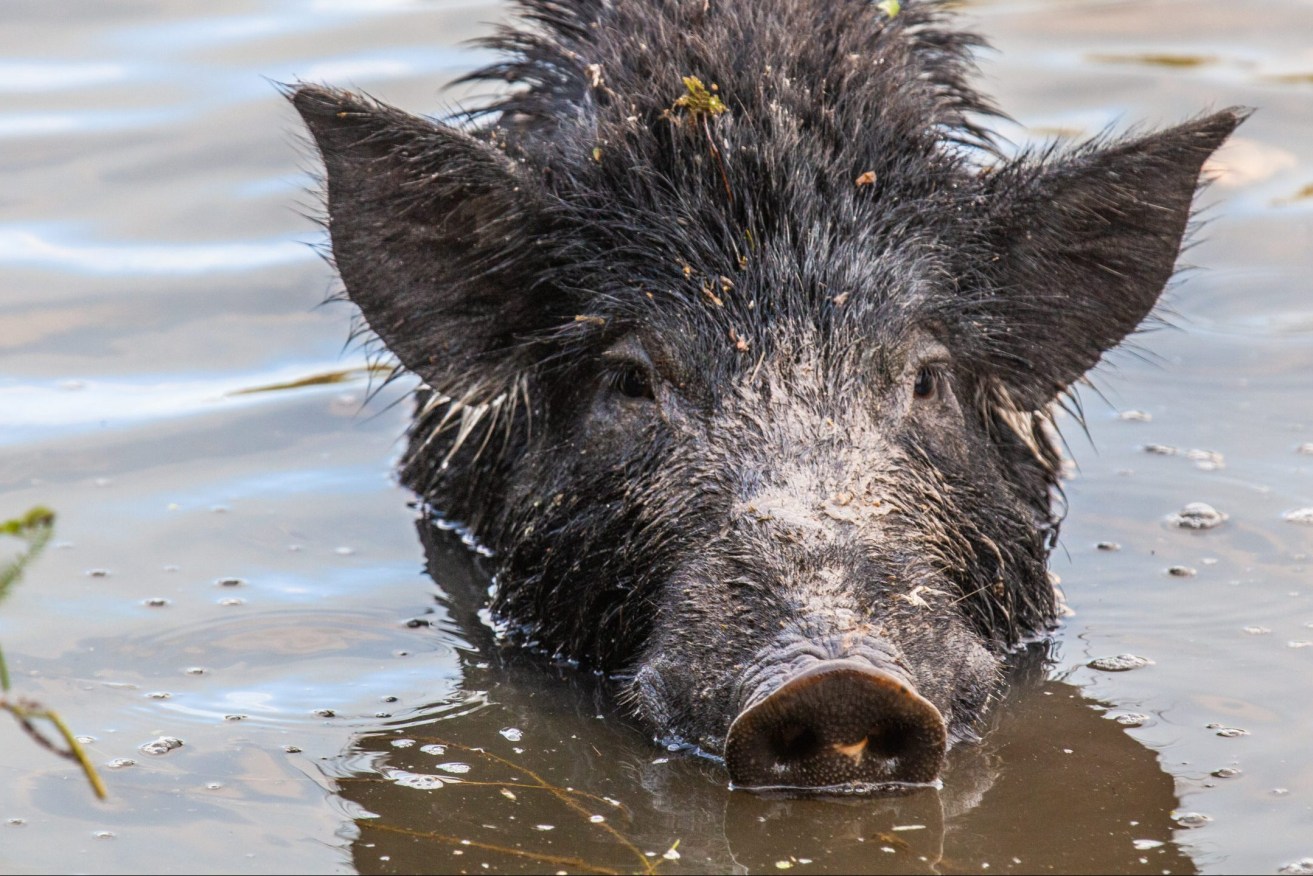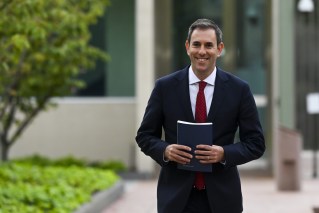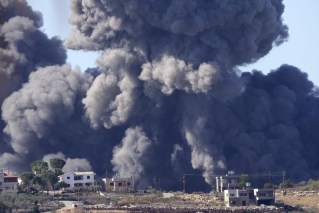Why this little piggy may hold the secret to reducing our emissions
Eradicating feral pigs globally would be the equivalent of taking one million cars off the road, according to a University of Queensland study.


A man has been accidentally shot during a North Queensland pig hunt. (Photo: Australian Wildlife Conservancy)
As the world rushes to embrace electric vehicles in a bid to cool the planet by 2050, researchers from Queensland and New Zealand are turning up the heat on the world’s feral pig plague as one solution to drive down carbon emissions.
The international team, led by the University of Queensland and the University of Canterbury, says wild pigs are releasing about 4.9 million metric tonnes of carbon dioxide annually by uprooting trees and plants and disturbing the soil.
The carbon dioxide released across the the globe is equivalent to the emissions produced by 1.1 million cars, the researchers say.
The researchers are using predictive population models, coupled with advanced mapping techniques, to pinpoint the climate damage wild pigs are causing across five continents.
UQ’s Dr Christopher O’Bryan said the globe’s ever-expanding population of feral pigs could be a significant threat to the climate.
“Wild pigs are just like tractors ploughing through fields, turning over soil to find food,” O’Bryan said.
“When soils are disturbed from humans ploughing a field or, in this case, from wild animals uprooting, carbon is released into the atmosphere.
“Since soil contains nearly three times as much carbon than in the atmosphere, even a small fraction of carbon emitted from soil has the potential to accelerate climate change.”
The scale of Australia’s feral pig plague has been known to have been causing environmental damage for decades, but it was only last year that a national action plan to keep numbers in check was implemented.
Part of the urgency was being driven by fears that African swine fever, endemic in countries on our doorstep, could hitch a ride into our commercial pig farms and pork supply chain via the feral population.
Peak industry organisation Australia Pork Limited (APL) is the program’s principal agency, appointing its former research and innovation general manager Dr Heather Channon to the role of national feral pig management coordinator.
APL was at Rockhampton’s Beef Australia in May with a display highlighting the depth of the feral pig problem to the beef industry alone.
Nationally the costs to the wider Australian economy are estimated at a conservative $106 million annually, although the true picture is far more difficult to quantify.
What is known is that feral pigs harbour and spread disease such as leptospirosis and brucellosis, and reduce the profitability of agriculture by contaminating water, damaging infrastructure, degrading crops and pasture and inhibiting the growth and reproductive capacity of livestock.
If the UQ and NZ-led research is on the money, feral pigs could now also be undermining global efforts to combat planet heating leading to irreversible climate change.
O’Bryan says the models point to a wide range of outcomes, but they indicate that wild pigs are most likely currently uprooting an area of about 36,000 to 124,000 square kilometres across the five mapped continents, in environments where they’re not native.
“This is an enormous amount of land, and this not only affects soil health and carbon emissions, but it also threatens biodiversity and food security that are crucial for sustainable development,” he said.
Using existing models on wild pig numbers and locations, the team simulated 10,000 maps of potential global wild pig density.
They then modelled the amount of soil area disturbed from a long-term study of wild pig damage across a range of climatic conditions, vegetation types and elevations spanning lowland grasslands to sub-alpine woodlands.
The researchers then simulated the global carbon emissions from wild pig soil damage based on previous research in the Americas, Europe, and China.
University of Canterbury PhD candidate Nicholas Patton said the research would have ramifications for curbing the effects of climate change into the future.
“Invasive species are a human caused problem, so we need to acknowledge and take responsibility for their environmental and ecological implications,” Patton said.
“If invasive pigs are allowed to expand into areas with abundant soil carbon, there may be an even greater risk of greenhouse gas emissions in the future.”
As the Australian experience with controlling feral pigs can attest, Patton said wild pigs were prolific, robust breeders and the cause of widespread damage.
“They’re both costly and challenging to manage,” he said.
“Wild pig control will definitely require cooperation and collaboration across multiple jurisdictions, and our work is but one piece of the puzzle, helping managers better understand their impacts.
“It’s clear that more work still needs to be done, but in the interim, we should continue to protect and monitor ecosystems and their soil which are susceptible to invasive species via loss of carbon.”








